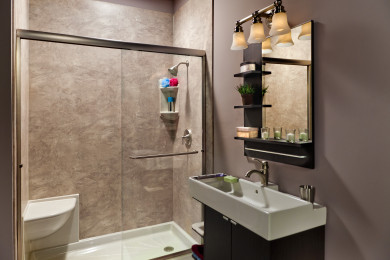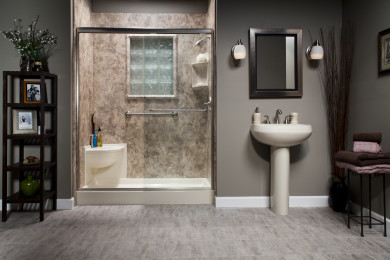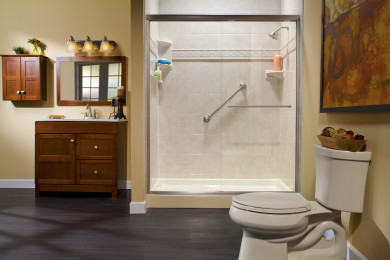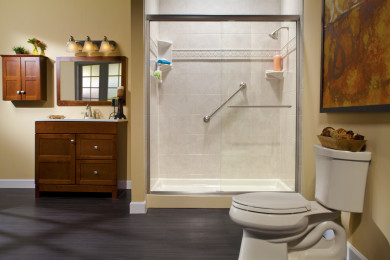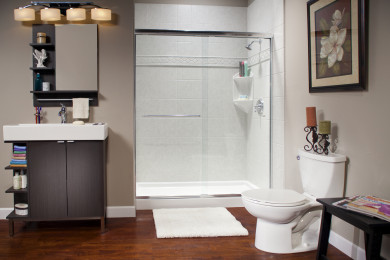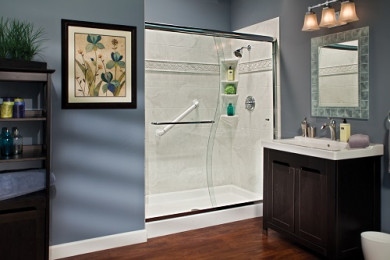April 15, 2024
Bathroom Design Considerations for Home Handicap Bathrooms
May 13, 2022
Bathrooms can be dangerous environments even for the most able-bodied. But, for a person who relies on a wheelchair or other mobility device, bathrooms can become even more dangerous. One way to make a bathroom less dangerous and more accessible is to do modifications that make it more accessible. Here’s what you need to consider when designing your handicap bathroom:
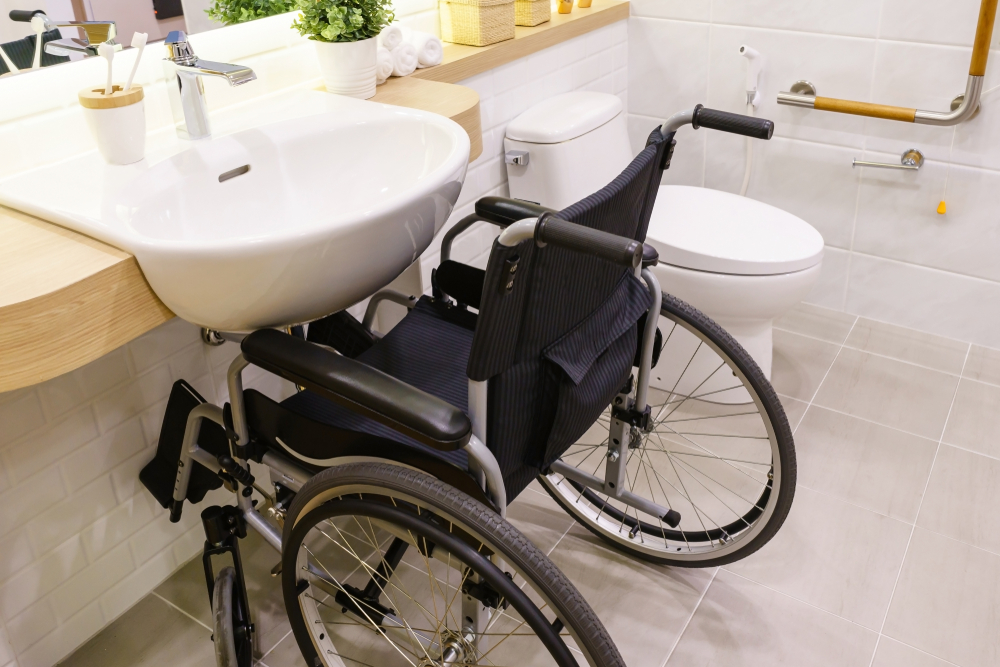
Shower and Tub Accessibility
There are plenty of ways to make a shower or tub more accessible. First, you can install a rolling shower seat or fixed shower seat to make taking a shower more comfortable. You can also upgrade your shower to a curbless shower to allow wheelchair users to easily access the shower. Last, you can consider installing grab bars inside and outside the tub and shower so users will have something to grab on to when getting in and out of the tub or shower.
Bathroom Sink and Vanity Accessibility
Did you know that cabinets underneath the sink make it harder for wheelchair users to access the sink? For this reason, it’s always best to mount a sink on the wall without a cabinet underneath. When installing this sink, keep in mind that the ADA recommends a 34” sink rim height from the front and a 27” clearance for knees. Additionally, consider installing single-handed or hands-free faucets to make accessing water easier.
Toilet Accessibility
ADA guideline recommends that a toilet should be between 17”-19” high. That’s because higher toilet seats make it easier to lower, stand, or transfer from a wheelchair or walker to the toilet. You can increase the height of your existing toilet in a few ways. The easiest way to do so is by installing a thicker toilet seat. You can also install a toilet riser, install an elevated toilet seat, or have a professional remodeler replace your entire toilet and install a wall-hung toilet that can be mounted at a suitable height.
General Bathroom Access and Safety
Some things that get overlooked when planning to make a bathroom more accessible are lighting, storage, and doorways. Good lighting is important for bathroom safety. Use natural light as much as possible and consider lower light switches so wheelchair users can access them. Having enough storage compartments in the bathroom will eliminate clutter and make navigating easier. Lastly, wider doors make it easier for wheelchair users to get in and out of the bathroom.
Ready to Design a Handicap Bathroom?
The Bath Doctor is here to help you design an accessible bathroom for you or your loved one. We understand how important it is to have a bathroom that is safe and accessible, and that’s why we carefully plan every detail. Get started today with a FREE estimate.


